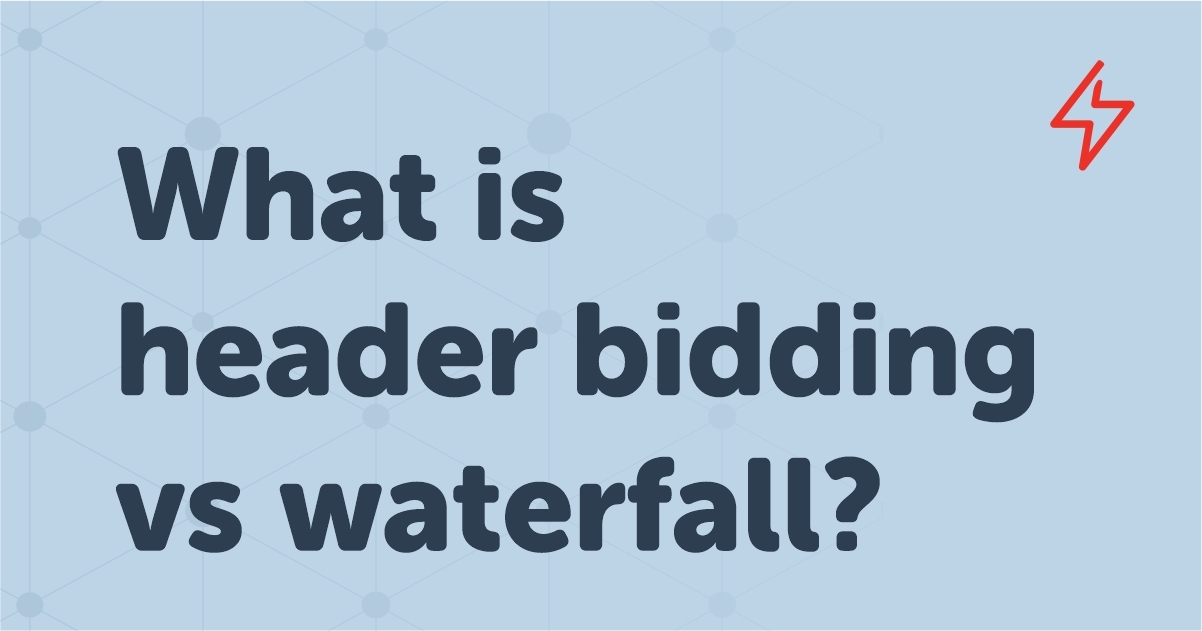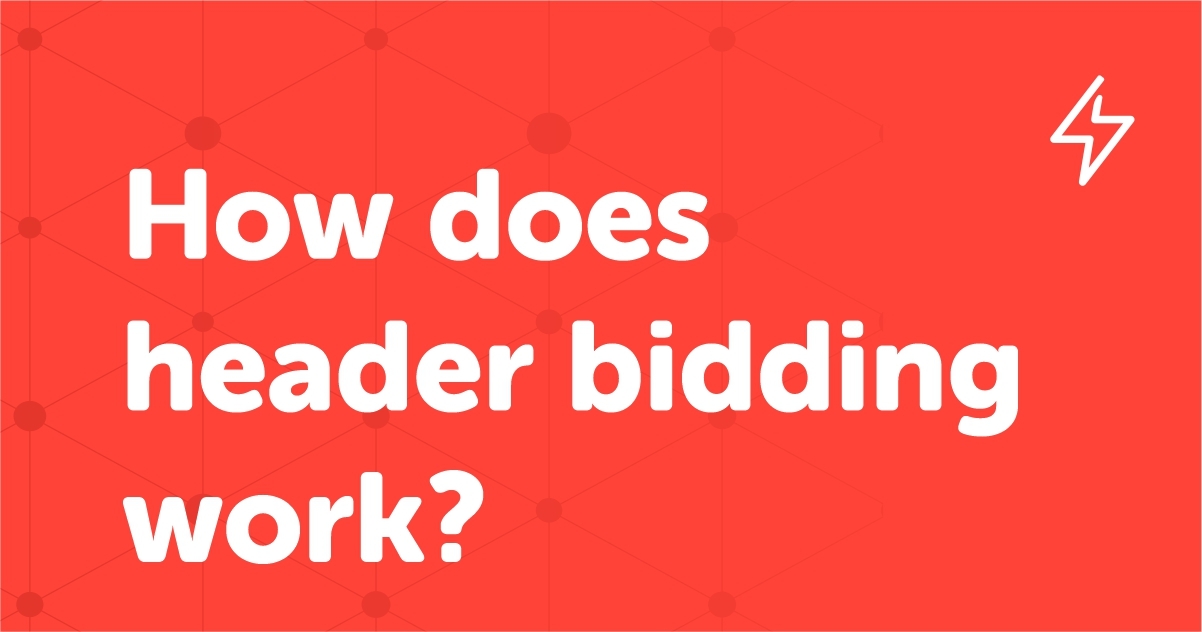Table of Contents
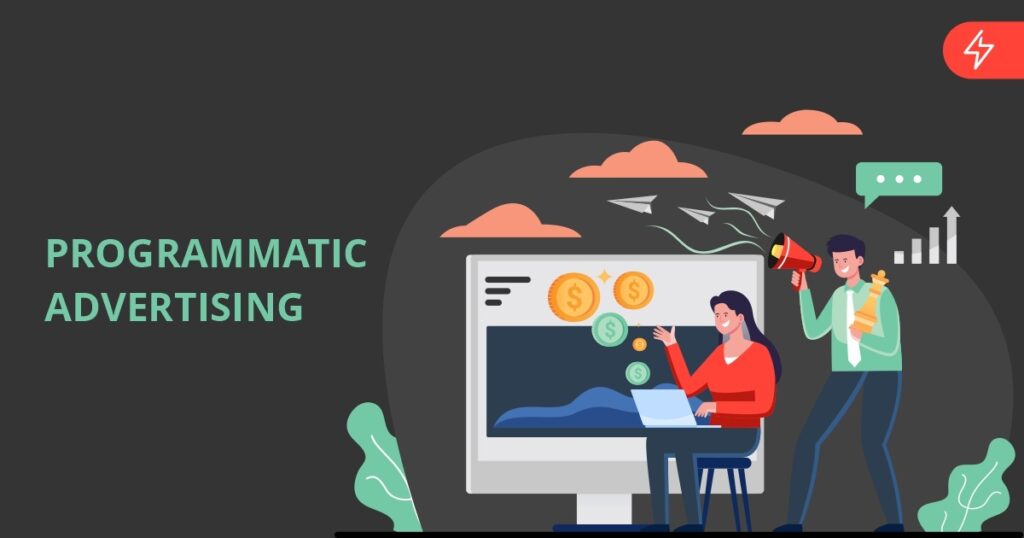
Effectively capturing consumers’ attention in today’s digital ecosystem is no easy task, which is why we’re going to not only scratch the surface but delve in deeper into Programmatic Advertising. There are zillions of websites, applications, and digital channels being viewed across numerous channels every single day.
Suppose you’re thinking about using separate platforms to advertise on multiple channels and trying to select the best spaces to display your advertisements in this dynamic digital world. Trust us, this is going to be a daunting task!. At AdSparc we can say that programmatic advertising solves all of this for you! Programmatic advertising is known as the automated selling and buying of online advertising.
Let’s jump in and learn more about programmatic advertising, programmatic video advertising, programmatic marketing, programmatic advertising platforms, programmatic media buying, auction types and more.
What is Programmatic Advertising?
Programmatic Advertising is the process of automated selling and buying of online advertising space. In simple terms, the market for digital advertising space is run by various ad exchanges, who operate automatic or mechanized auctions that cohesively link both parties for the transaction:
- Advertisers – they want to buy ad space on the internet
- Publishers – the website owners or holders with digital space to sell
Programmatic advertising encapsulates the entire process to a whole new level. It instigates algorithmic software that manages the sale and placement of digital ad impressions through ad exchange platforms, in just a fraction of a second. Programmatic advertising also integrates traffic data and online targeting methods to serve impressions more precisely and proficiently. It eventually leads to better ROI for advertisers and publishers alike.
What is Programmatic Video Advertising?
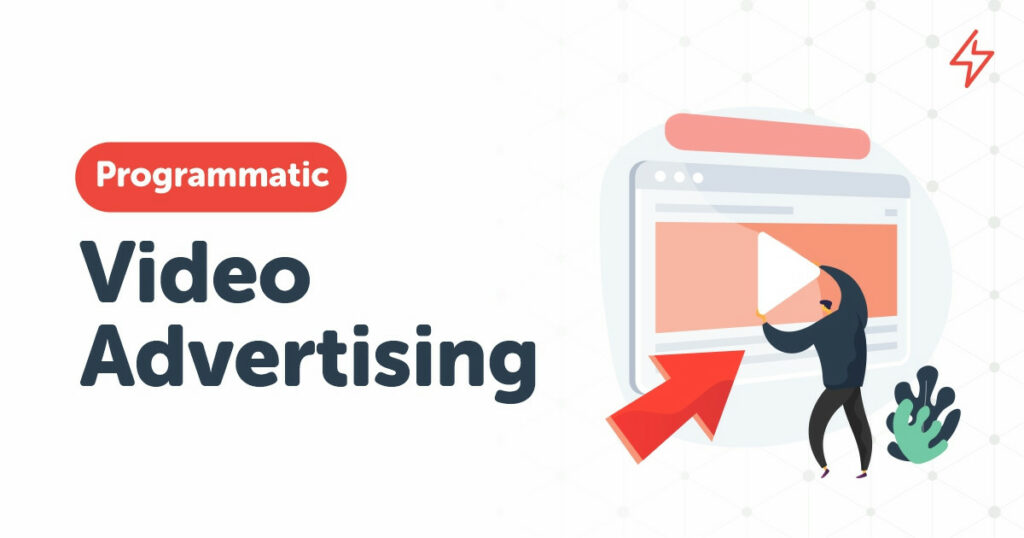
Programmatic video advertising can be described as the practice or procedure involving bots in buying ad space based on set requirements. We can say that programmatic video advertising has made it simpler for brands to endorse their products or services online. They only need to use an advanced online video platform to find and buy ad space for their business. Once the selection is made, the online video platform does all the work. There are multiple Video Platforms available in the market that use complex algorithms to discover the targeted audience to whom it will showcase the relevant ads during a set timeframe.
As an advertiser, all you need to do is define the ideal audience in detail, offer access to the ads, and set a budget. The program carries that user data and uses real-time bidding (RTB) to display the ad to a user that correctly resonates with the client profile. Eventually, the ad with the highest bid wins, and this whole process happens while the page is loading. Ideally, it is a hyper-effective move. Well, displaying targeted ads that only get featured in front of people, audiences, or users interested in what you have got to offer looks like a marketer’s dream, right?
What is Programmatic Marketing?
One of the most effective growths in digital marketing is programmatic marketing. Programmatic marketing empowers you to target a specific audience on a particular webpage they are visiting. So, what is programmatic marketing?
Programmatic marketing is an advanced marketing strategy that involves an automated, real-time bidding process that buys ad inventory, allowing you to advertise to exact users in detailed contexts, which results in hyper-targeted, super-effective ads.
Programmatic marketing can be referred to as the distribution of ads when individuals or people aren’t directly involved in the process. So, is programmatic marketing limited to programmatic advertising? Well, the answer is, yes! We must be careful here since it specifically denotes paid advertising, not other forms of automation, like web personalization or email marketing; they are also part of marketing automation.
Programmatic marketing has developed rapidly and become much more effective for advertisers and media agencies who manage their budgets. Before the programmatic era, a publisher had to call an advertiser, negotiate terms for multiple values of ad inventory, and use a manual insertion order method before buying. Nowadays, ad exchanges have entirely changed the procedure of selling and buying in programmatic advertising.
What are Programmatic Advertising Platforms?
Programmatic advertising platforms create a pivotal structure, and are a part of the comprehensive system needed for the programmatic advertising procedure to function effortlessly. Each fragment of the system mechanizes together to serve both publishers and advertisers by ensuring a handful of benefits. The list includes Demand-Side Platform (DSP) and Supply-Side Platform (SSP), Data Management Platform (DMP), and Ad Exchange.
1. Supply-Side Platform (SSP): An SSP is the exact opposite of a DSP. A DSP allows advertisers to buy across various ad exchanges simultaneously, however an SSP allows publishers to sell their ad inventory across multiple ad exchanges. By making their ad inventory widely available through an SSP, publishers can ensure that they are obtaining the best possible offer and maximum revenue
2. Demand-Side Platform (DSP): A DSP is a platform where brands and agencies can buy ads across multiple advertising exchanges. DSP aggregates advertising inventory from various exchanges all in one place, allowing for greater efficiency
3. Data Management Platform (DMP): A DMP is marginally distinctive; as the name suggests, it deals with data predominantly. DMP is a platform that collects, organizes and activates first, second, and third-party audience data. Both buyers (advertisers) and sellers (publishers) can use DMP in their campaigns
4. Ad Exchange: A digital marketplace where advertisers and publishers cooperate in trading digital ad inventories like display ads, native ads, videos, in-app, and more. The trade happens via real-time auctions, empowered by real-time bidding technology (RTB). It’s an auction mediation mechanism that doesn’t serve either the buyer or the seller side; it is an autonomous platform that expedites programmatic ad buying
What is Programmatic Media Buying?
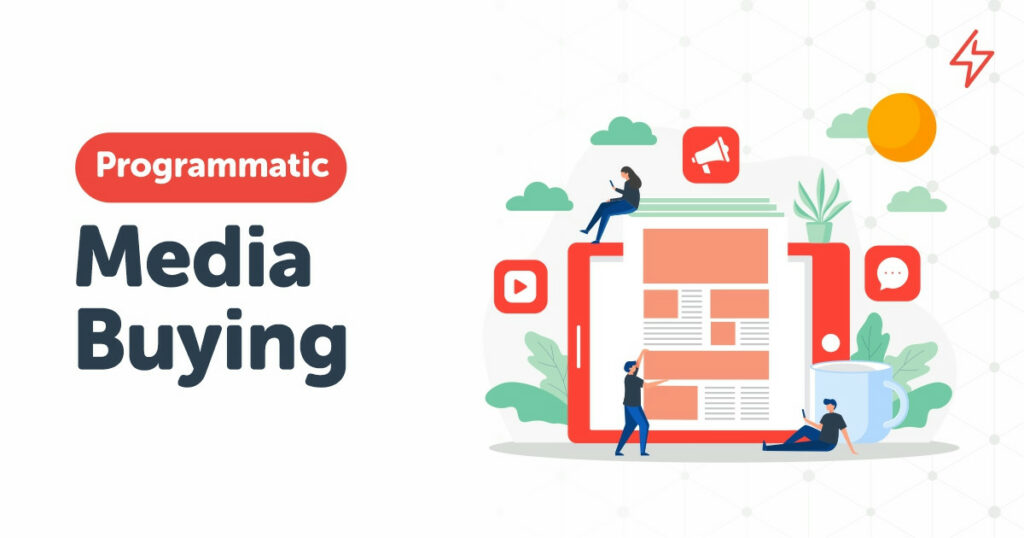
Programmatic media buying can be described as the online display advertising that is aggregated, booked, analyzed, and optimized through demand-side software interfaces and algorithms. Programmatic media buying utilizes and uses data insights and algorithms to serve ads to the correct user at the correct time and the correct price.
Auction Types for Programmatic Advertising
Let’s look at the diverse auction types present in programmatic advertising. Each type offers various advantages to publishers.
1. Header Bidding: A technique where publishers provide inventory to multiple ad exchanges concurrently before going to ad servers. By using header bidding, publishers can upsurge their income by growing the competition.
2. Exchange Bidding or EBDA: Also frequently referred to as Open Bidding and Exchange Bidding, Google Exchange Bidding Dynamic Allocation (EBDA) is a server-side method comprising a unified auction where exchange networks and SSPs bid on ad inventory
3. First Price Auction: A first-price sealed-bid auction is also known as a blind auction. In this auction model, bidders participate in the auction simultaneously, and the highest bidder wins. The bidder pays the exact price per thousand ad impressions (CPM) during the auction. The winning bid is known as the clearing price. First-price auctions usually favor publishers more than second-price auctions
4. Second Price Auction: It can be described as the most common type of auction in programmatic advertising, mainly because second-price auctions directly benefit the advertiser. Second price auctions were designed so advertisers could bid for their entire budget; simultaneously, they were guaranteed not to overpay per impression
5. Real-time bidding (RTB): Aka open auction, RTB is when inventory prices are decided via an auction in real-time. RTB is a cost-effective way to buy media with a large audience. In an open marketplace or open auction, inventory prices are determined in real-time via an auction, and any advertiser or publisher can participate. The chief or highest bidder wins the impressions
6. Private Marketplace (PMP): PMP is like open auctions; however, PMPs have restraints on who can participate. Only designated and preferred advertisers have access to PMPs on an invite-only basis. However, publishers may have a selection method that permits advertisers to apply for an invitation in some cases
- Programmatic Direct/Guaranteed: The direct sale of reserved ad inventory where automation substitutes the manual insertion order procedure and includes the advertiser or advertising agency negotiating or discussing directly with the publisher. It helps to prevent fraudulent ad spaces. The transaction happens at the price negotiated between the publisher and the buyer (advertiser).
- Preferred Deal: It bypasses auctions to offer advertisers exclusive access to ad inventory
How does Programmatic Advertising work?
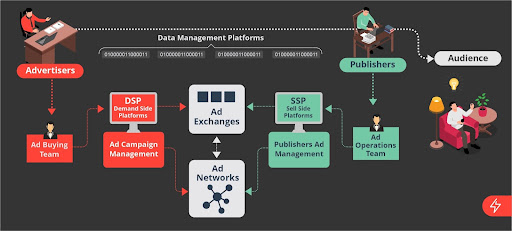
Programmatic advertising assists in connecting publishers with available ad space (ad inventory) to advertisers who want to buy those ad spaces to promote their brand. When advertisers want to launch a digital campaign to promote their product or service, they contact their programmatic ad agency or trading desk. The agency uses DSP to automate the method of buying ad impressions to meet the campaign’s goal.
A Demad Side Platform allows advertisers and their agencies to purchase ad inventory from numerous publishers. The DSP ensures the ads are directed at the right audience via DMP, managing audience data. This data targets the right audience based on location, demographics, user behavior, and online activity.
When an individual, who falls within the advertiser’s target audience, lands on a publisher’s website, the website sends an ad request to the SSP. Now the SSP is used by a publisher to sell ads to maximize the value the publisher receives from an impression. The SSP initiates an auction amongst its buyers, and the DSP is connected in.
The DSP uses the data to assess the ad and match it with their data and highlighted parameters. This method is used to elect a bidding price for the first impression. It is held within the SSP or ad exchange in real-time; the procedure is often known as RTB. Though it sounds like a long process, it takes only 100 milliseconds to finish the bidding. Once the impression is sold, it is sent to the publisher’s website for display. The procedure repeats whenever a user lands on the website or refreshes the webpage.
Why is Programmatic Advertising Vital for Publishers?
With accurate tools, programmatic advertising safeguards publishers, and going forward, it can keep their visitors in mind, hosting and displaying relevant ads. Publishers can also access deals that will generate higher revenues. Plus, programmatic advertising maximizes revenue via distinctive types of bidding like exchange bidding and header bidding.
The benefits of programmatic advertising include:
1. Minimalism: Programmatic advertising makes it simpler and easier to sell advertising space. Publishers can optimize and elevate their ad sales with appropriate automation tools that reduce the time investment needed to find advertisers
2. Interaction: Publishers can communicate, connect, and collaborate with advertisers with ease, safeguarding both the publisher and advertiser benefit
3. Being relevant: When visitors visit a publisher’s website, they will be served with correct ads relevant to them as they are part of the advertiser’s target audience. Programmatic advertising enables advertisers to access a range of publishers, eliminating the need for back-and-forth phone calls or emails for negotiation
4. Competence: Programmatic advertising can drop costs and foster margins for publishers, allowing them to earn more from their available ad space
What’s next for Programmatic Advertising?
Artificial Intelligence (AI) and Machine Learning (ML) are having an immense impact on programmatic marketing and programmatic advertising. As the technologies are evolving, the trends in programmatic advertising are also influenced. Nowadays, AI and ML are used to locate patterns and predict outcomes in real-time in multiple data points. As AI is developing, it is amalgamating mapping of ad viewing metrics with user data so that ads can be placed more precisely, hence, lowering the expenditure.
Programmatic advertising is merging with the power of artificial intelligence and obtaining essential data and insights to provide more detailed messaging to accurate users. Dynamic creative optimization (DCO) enables advertisers to provide highly relevant and personalized ads to the targeted groups, eventually benefiting the publishers. DCO recognizes who the viewer is and picks the best creative combination to give the right message for each user, guaranteeing that publishers will showcase the most relevant ads to the users.
How does AdSparc Help Publishers?
AdSparc makes programmatic advertising stress-free for publishers. Whether you have a solo site or a significant publishing network, we can amplify your revenue! AdSparc’s core belief is to empower publishers by fostering partnership and encouraging meaningful interpersonal interaction amongst advertisers and consumers. At AdSparc, we are consistently progressing to help publishers foresee and meet every opportunity. For us, Publishers are First! We create infinite possibilities for emerging online content creators by assisting them to achieve compound growth globally. Never miss out on the advantages that programmatic advertising can bring you as a publisher.
Why Publishers Love AdSparc?
- Unique Opportunities
- High Service Level
- Technology Knowledge
- Proprietary Tech
- On The Dot Payments
- Get Paid in Any Currency
Also Read: Key Ad Metrics Simplified for Dummies!
